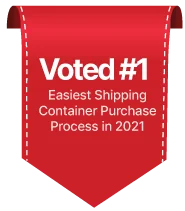Introduction
It’s not a secret that container ships make a lot of trips across the border. Recently reported on May 1st, 2022, there were 70 container ships totaling 432,909 twenty-foot-equivalent units docked in Long Beach, California.
That’s more than the entire inbound container volume handled by that port during August. Savannah and Charleston handled more in four months and two months, respectively. These figures reflect the volume of cargo moving through the U.S. supply chain.
15-mile stretch
Earlier this year, the U.S. ports handled almost seven million containers. Those volumes represent a 23% increase over the same time last year. But that was before the spike in container imports. Until then, the ports were able to process only about six million containers a month. And that’s not even including the ones that are unloaded at the end of a voyage.
This, however, does not include empty containers that are held by shipping lines and all the shipping containers held by the shipping container logistics industry.
Security concerns about storage containers aren’t new, but the lack of attention to the issue is a glaring flaw. As the cargo containers are lifted off freighters in the Port of New York and New Jersey, they would cover nearly fifteen miles if stacked end-to-end.
Security experts began taking this threat seriously after the attacks of 9/11. One top scenario involves Al Qaeda using one of these containers to smuggle a small nuclear weapon into the United States. If the weapon is small enough, it would be easily detectable by customs inspectors.
The shipping container revolution has benefited ILWU longshoremen in several ways. For one, they received better wages, a pension fund, and a cleaner and safer working environment. However, some feel that longshoremen have lost their sense of identity because they were forced to accept the new environment.
Storage containers began to transform the United States’ commercial ports and required acres of flat land including in the state of Arizona, Connecticut, Florida, and many more. In the early 1960s, McLean partnered with a trucking company called Matson Navigation to start container service in South Vietnam.
A recent announcement by the St. Louis region reveals a new plan to develop a container terminal. This facility will be a gateway port for the new COV service. Located along the Mississippi River, it would be the first to handle COVs. In the future, this area will be a major hub for containers. These new developments will provide jobs and growth opportunities for the region.
200 million trips a year
More than two-thirds of the world’s trade is seaborne, and the number of shipping containers on the road is exploding. In 2014, the United States alone imported over $1.73 trillion worth of goods through its shipping ports.
Shipping containers have come a long way from their humble beginnings as containers for goods that were once considered oversized and inefficient. Shipping companies can now afford to spend a fraction of what they did before by using a shipping container to make shipments faster.
The shipping container industry is global, and there are now more than 17 million of them in use today. A single container ship can carry over 20,000 containers.
According to the International Maritime Hall of Fame, Malcolm McLean, the inventor of the modern shipping container, is credited with creating the shipping industry as we know it today. The first shipping container was an eight-foot-high metal box, and it has since evolved to a massive industry that handles over 200 million trips a year.
The capacity of shipping containers has increased dramatically in the past two decades. Despite the size limitations, a 40-foot shipping container can hold 8,000 shoe boxes. And if you’re curious, you can visit Container City, a city in Mexico made entirely of shipping containers.
This four-story structure has a total area of 48,000 square feet and is home to museums, restaurants, and apartments. These shipping containers have inspired modern architects for over a decade. Although they may have started as simple storage spaces, many people have transformed them into tiny homes and businesses.
There have been similar problems in other countries, including China. However, the United States isn’t the only country dealing with this issue, with supply chain snarls hitting holiday shoppers in the U.S. and Europe. Executives are warning that this crisis will last well into the next decade. These issues are affecting the supply chain and could affect the economy of many countries.
New fines for non-U.S.-packed containers
To combat this congestion, the Biden administration has introduced new fines for carriers of non-U.S.-packed containers at ports in Long Beach and Los Angeles. Under the new rules, carriers of such containers have nine days to move the containers without incurring a fine. Otherwise, they will be charged $100 per container per day.
However, carriers may be forced to increase prices to make up for the new costs.
Under the new rules, most food and beverage containers made from polystyrene, commonly known as Styrofoam, are banned from entering the United States. These include black and white clamshell containers commonly used for hot-food takeout orders.
However, small businesses with annual revenue of less than $5 million can request an exemption for a year. Some other containers that can be banned include prepackaged foam containers used for items like ramen noodles or macaroni and cheese. Other containers are allowed, including small cups with a capacity of two ounces or less. Milkshakes can also be transported using international mail.
Impact of border closures on supply chain
The impact of border closures on U.S. firms trading with Mexico is well-documented. Approximately 30 percent of U.S. manufacturing exports to Mexico come through cross-border supply chains. In effect, cutting off access to such supply chains can lead to price hikes, supply hang-ups, and reduced options.
The effects are similar to high tariffs. In addition, the impact on U.S. firms trading with Mexico may be even greater.
As a result, supply chains worldwide are being impacted by the COVID-19 pandemic. Researchers at the Texas A&M Transportation Institute (TTI) studied how border closures affected supply chains in the region.
As the COVID-19 outbreak quickly escalated, the border closures disrupted global supply chains and affected global commerce. The study’s authors, Juan Villa, Jose Rivera, Daniel Escoto, and Carlos Silva, contributed to the study.
If the border is closed, $1.3 billion worth of goods would be disrupted, affecting nearly every industry in the country. Truck-transported goods represent the largest proportion of total trade with Mexico, accounting for almost one-third of the value of goods transported across the border.
Rail transit is heavily dependent on mineral fuels and plastics. If the border is closed, these goods may experience substantial holdups and price spikes.
In addition to disrupting international trade, border closures could also have an impact on U.S. supply chains. According to the World Bank, the U.S. economy will experience a 20 percent decline in Canadian exports by 2020.
Despite the effects of border closures, the drop is largely due to shifts in consumer demand and supply chain issues. For instance, in a region where auto manufacturing has declined, the decline in exports of iron ore to Canada has been particularly large. Additionally, increased focus on employee safety will result in delays in shipments of other products.
Cost of living in a shipping container
If you want to live in a shipping container in the United States, there are some things you need to keep in mind. Because shipping containers don’t sit on a foundation, they are not considered a permanent structure. As such, you need to check your local zoning laws and building codes before starting the process.
You should also pick a building site. Some cities do not allow non-traditional structures, but some don’t.
The cost of living in a shipping container in America can vary depending on the state you live in. The cheapest shipping containers are yellow, but the most expensive ones are the new 40′ and 45′ sizes. Some shipping containers can hold as much as four rooms’ worth of furniture and are difficult to find.
Other costs include electricity, plumbing, and insulation. Some shipping containers can cost upwards of $6000.
Shipping containers are not cheap, but they do have their advantages. If you have the money to spend on professional labor, you can purchase a used container. However, you can expect to spend at least $15,000 on labor.
The cost of purchasing a shipping container varies depending on the size of the container, but it is generally between $25,000 and $45,000 for a new one. If you opt to build your own shipping container home, you can expect to spend around $86,000 or even less.
There are two main types of shipping containers available for purchase in the United States: one-trip and two-trip. One-trip containers are more expensive but have only made one trip. This means they aren’t subject to significant wear and tear.
One-trip shipping containers are a great option if you are looking for low-cost housing. However, some critics argue that they lack structural strength.






 147 People have requested shipping container pricing this week through TheShip
147 People have requested shipping container pricing this week through TheShip